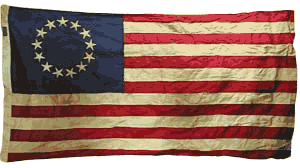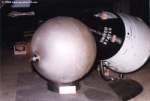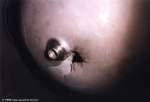 |
Cost of the War in Iraq
(JavaScript Error)
|
 |
Cost of the War in Iraq
(JavaScript Error)
|
|
|
Like many Oregon Coast residents, Ms. Schirmer of Florence enjoys walking the beach the morning after a storm. She was doing just that on January 2, 1966, and spotted what appeared at first to be the mother of all Japanese fish net floats, a sphere two feet in diameter. It was encrusted with barnacles, had two short pipes protruding from opposite sides, and was quite heavy. Ms. Schirmer managed to wrestle it up to a secure area, and concealed it with kelp and driftwood. She then contacted the Siuslaw Coast Guard.As the sphere was metal, the Coast Guard feared it might be a mine of sorts, and called in a three-man Navy demolition team from Bremerton. They proceeded to blast a jagged 4" hole in one side, and found the sphere empty and harmless. There then ensued a debate over possession of the sphere between Ms. Schirmer and the Coast Guard, but it was no contest. Ms. Schirmer took her prize home with her, and kept it for thirty years.
Cleaning the sphere revealed it was made of titanium at least 1/4" thick. Several numbers were stenciled on the ball itself, and more numbers were engraved on the two valve plates. All indications pointed to a piece of space debris that survived re-entry and splashed down in the Pacific.
The sphere was delivered to the Oregon Air & Space Museum of Eugene in November of 1996 as a donation from its discoverer, Ms. Schirmer.
Museum research indicates the only use of such a sphere was in the equipment module of the Gemini spacecraft. The equipment module was attached to the rear of the Gemini cabin section, but separated from the rest of the spacecraft prior to re-entry of the cabin section containing the two astronauts. The equipment module stayed in orbit for a while, and then re-entered and burned up. The titanium fuel, oxygen and helium spheres had a good chance to survive however, due to their strength and that the shell and frame of the module absorbed much of the re-entry heat.
Given the date the sphere was found, it was most likely used on Gemini 3, 4 or 5. They were launched in March, June, and August of 1965. The sphere will be displayed next to the six foot long Gemini spacecraft model recently refurbished by museum volunteer Mr. Menard and his father.

White rectangle at base is a $20.00 bill |

Blast damage from Coast Guard |
|
|
|
|
|
|